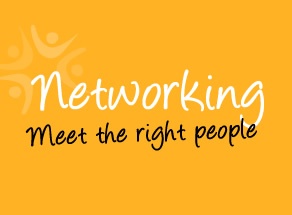
Companies Create Powerful Employer Brands By Doing These 4 Things Consistently
02/05/2018 06:00AM | 6393 viewsWhat often gets lost in discussions about job losses in some areas of the country is the massive competition for and a deficit of skilled workers in our country. According to Randstad’s 2016 Workplace Trends Guidecompanies struggle to fill jobs, especially with diverse executive talent and leadership positions. In fact, 75% of companies surveyed by Randstad said it takes them more time to find the right talent to fill positions than ever before and reported being 13% understaffed. These trends are expected to continue in 2017.
So what are you going to do about it?
Start by asking yourself this: Why would an employee want to work for you or any company? It’s not money or job title. Anyone can dangle those. Companies that win long-term have employees who feel a sense of alignment with what that company's brand stands for. But too often positive perceptions about that brand in the marketplace are not reflected in the workplace.
How do employers overcome that to create alignment between leaders and their employees internally and create a powerful employer brand that extends to the marketplace?
I talked to two executives whose brands are dealing with this question head on: Randy Martinez (Director of Strategic Diversity Management at CVS Health) and Kety Duron (Chief Human Resources and Diversity Officer at City of Hope, a California-based healthcare system). Through my research and our discussions, I have found that companies that have a built strong employer brands to retain the talent they have and attract the talent they need do the following four things consistently:
1. Give individuals the same influence in the workplace they have in the marketplace.
Simply put, businesses are smothering their employees with stuff to do and promoting silos rather than sharing and alignment. That’s about the business defining the individual. Remember: Survey after survey shows people do not pick jobs based on money; they base it on culture. What they are looking for is a place where they can find alignment, have influence, maximize their potential, and achieve significance.
City of Hope gives its employees influence by hosting ongoing forums from breakfasts with the CEO to leadership town-halls with supervisors on up. Participants are invited not only to hear from the C-suite but also to ask questions. “We encourage questioning,” says Duron. “Participants can submit questions via text anonymously allowing them to ask what comes to mind in a safe setting. The process encourages transparency and forces two-way communication between staff and leaders. Healthcare is in such a state of flux. Like many healthcare organizations, City of Hope is on a transformational journey. Giving employees the opportunity to influence the outcomes creates a culture of transparency, trust, and engagement. This is the only way to move organizations forward and create an alignment with its mission and vision.”
2. Create a culture in which trust and engagement is thriving between leaders and employees.
Organizations and their leaders know they need engagement with their people and their trust to evolve and grow. Yet my assessments and research findings confirm that what those companies say is not leading to actual engagement and trust. This is even true at companies that have statements like “respect individuals,” “our people are our point of difference,” or “value our and all people” as part of their mission statements.
Randy Martinez solved this for a CVS division that had particularly low employee engagement by actually engaging the employees and spending hours talking in small groups about what their challenges were: “What we discovered was there was a real lack of understanding about diversity. People talked about their leaders being prejudiced simply because they felt disengaged, and I knew that was not the case about those leaders. But there was a lack of trust, productivity, and communication because of that perception.” The solution? Create “reverse charter” committees led by employees. Leaders are required to attend and be vulnerable and open enough to listen as those employees express themselves. The charters put those employees’ concerns (for example the stresses several single mothers were going through) at the center of each discussion to help create environments in which they produce more. The results? According to Martinez, a 37% growth in engagement scores from that division within seven months.
3. Allow people to express who they are, not just what their leaders or the company want them to be.
People want to be part of a workplace culture that allows them to be their natural, authentic selves. Consumers are asking, “If you are trying to market to me, do you have more of me in leadership? Do you support me through more than just corporate social responsibility?” To do that, companies must promote freedom of expression in the workplace and find like-mindedness through differences. And that requires intimacy, not more smothering of opinion.
“To promote freedom of expression, you need to promote differences not just similarities and highlight the importance of the tensions both bring to the table,” says Martinez. “For example, if you have a terrific employee with rainbow flags in his or her cubicle and another a few cubicles down with conservative religious material posted, you can’t just approach them and ask them to tone it down. That is not working through the tension. What a good leader needs to do is to take those two people and work with them and educate each other by expressing what it means to them.”
Duron agrees: “Differences question the status quo and force us to learn from diverse thinking. You have to have people who are agile and can adapt. We can’t say we are open and then create workplaces that do not embrace diversity of thought.. If we are trying to select and attract diverse talent to the leadership table and embrace their values, we must continue to encourage and value diverse thinking. When that happens at the leadership level it will cascade to all levels, creating an organization where diversity and inclusion is part of the organizational fabric.”
4. Let employee identities be defined by what they solve for not their job descriptions.
Job titles create silos and fuel hierarchical, bureaucratic infrastructures. Employees get buried under and blinded by those titles and their job descriptions. Labeling their roles and listing their responsibilities can make them feel trapped and boxed in by a limited set of expectations, uncertain how to unleash their full potential and that of others. Defining employees’ work by the problems and needs of the business they solve for aligns their strengths with that of the business and allows them to bring their whole authentic selves to work every day.
Duron gets what this means: “We want people to think big and beyond the job description. We want them to know what they bring to the table. What – as a leader, manager, and employee – do you bring to make this organization excellent? In traditional organizations, people are asked to work to their job descriptions while leaders work in a vacuum to come up with solutions to the larger organizational problems. We want to encourage people to converse with each other and inspire each other to solve problems beyond their job descriptions. Front-line staff can better identify the problems and offer solutions that make sense. Together we are discovering what more we are able to solve for as both individuals and collectively as teams.”
To Martinez, this is of ultimate importance for doing what I have argued: moving people to the center of any growth strategy: “Allowing people to take center stage to manage and find solutions for the challenges they are having and leaders to sit back and listen and then help guide them to solutions. But you can only do that by allowing 100% of the people to bring 100% of themselves to the organization. When you create an environment where people can bring their whole selves, they engage the business of the organization and look to solve for any business challenges. When that happens, you drive creativity and innovation. Everyone solves for market challenges the organization might have.”
Employer branding is not about an organization positioning and packaging the best versions of who they think they are. It’s about creating environments in which employees (regardless of hierarchy or rank) can influence the future of how the workplace helps define the marketplace the organization serves. In other words, the value proposition of employer brands should be encouragement of its employees to define the business because. That only happens when the organization creates a safe environment where no one is judged, where all employees feel valued and respected, trust is earned, transparency demanded by and for everyone, and permission to take action (responsibly) is not required.
Follow me @GlennLlopis. Learn more about my new book, The Innovation Mentality






Post your Comment
Please login or sign up to comment
Comments